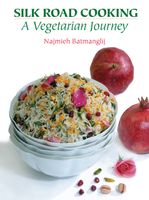Label
All
0
Clear all filters
Save 25% on ckbk Premium Membership with code FALLFLAVORS 🍁
Mulberries
Appears in
Published 2000
Mulberries come in many varieties, the most important for eating being white and black. The white mulberry, native to the higher elevations of China, has been cultivated for at least 5,000 years for its leaves, which are the silkworms’ only food, and for many centuries in other countries, notably Iran. Its sweet fruit, like that of the black mulberry, is delicate: It is not picked, but shaken from its tree onto a sheet. The fruit may be eaten fresh or incorporated in sherbet, jam, vinegar or wine. Dried white mulberries, available at Persian markets, are used as a sweetening agent or in stuffings as one would use raisins.
Become a Premium Member to access this page
Unlimited, ad-free access to hundreds of the world’s best cookbooks
Over 160,000 recipes with thousands more added every month
Recommended by leading chefs and food writers
Powerful search filters to match your tastes
Create collections and add reviews or private notes to any recipe
Swipe to browse each cookbook from cover-to-cover
Manage your subscription via the My Membership page
Best value
Part of
Advertisement
Related Recipes
-
-
-
-
Related Reference
-
-
-
-
Advertisement
The licensor does not allow printing of this title



